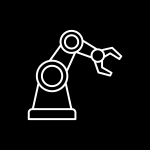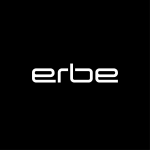Why do we need Robotic Sound Design?

We need User Interface (UI) sounds and User Experience (UX) sound design because we humans are used to acoustic communication. We listen and understand through our ears. Hearing is one of the most important communicative receptive channels for humans. So, it makes sense to use the auditory channel in the HRI (human robot interaction).
Robots can communicate their functions to the user via visual cues and sound (robotic sound design). Only when this communication functions properly, companies can offer a great product or service to their users. While there are different application areas, there are cases where visual feedback is not enough. In these cases, only auditory channels can convey and receive necessary information, e.g. alarm sounds.
With UX sounds (or robotic sound design) it is not only possible to provide users with feedback to their actions, but also give context and help the user understand how to use the robot. In the near future, sound design and acoustic human-robot communication will play an important role, especially in the field of social robots.




What does great UX Sound Design for robotic look like?
Good UX sound design for robotic is user-centric. It adapts perfectly to its user environment. It has to be easy to understand for the user, the functions of the product must be clear to the user. It improves the user experience. Thus, it’s important to know your user and the user environment: Personas, Empathy Maps, Interviews and User Story Maps can be useful here.
Good UX sound design for robots is not intrusive. Even with warning sounds, good UX sound design adapts to the user environment.
Good UX sound design for robots should never seem unfamiliar or strange in its environment, but should fit the product as well as the brand aesthetic and user environment.

All UI sounds of a robot must adhere to the same design principles. The sounds should also be coordinated with each other.
Technical requirements should be considered during the design process. Sounds need to be mixed to the specific loudspeakers. For example, cobots have different speakers than industrial robot solutions, so the sounds need to be matched to the technical specifications to create the most perfect listening experience.
Conclusion: UI sounds for robots have to be intuitively understood by users. That’s why great UX Sound Design always considers the user first.
Our expertise in the field of robotic sound design includes UX sound design for cobots, medical robots and industrial robotic solutions.
—
Contact person for project inquiries:
Rainer Hirt
+ 49 (0) 75 31 36 38 524
robotic (at) audity.co












